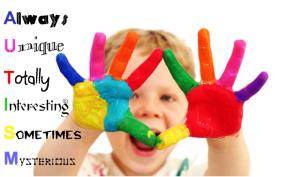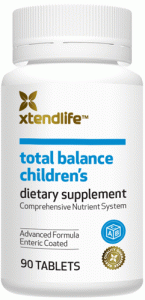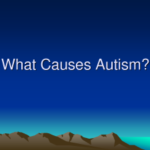 The Types of Autism Therapy: What are Your Options?
The Types of Autism Therapy: What are Your Options?
Behavior and Development Programs.
 Children with autism may be placed into a behavior and development program, which focuses on attention span, anxiety, social skills, interactions with parents, and play time. Certified professionals work with children for up to 25 hours a week, and these programs can last anywhere from 12 weeks to 3 years.
Children with autism may be placed into a behavior and development program, which focuses on attention span, anxiety, social skills, interactions with parents, and play time. Certified professionals work with children for up to 25 hours a week, and these programs can last anywhere from 12 weeks to 3 years.
Applied Behavior Analysis is a common type of autism treatment, and has a handful of different subtypes in order to help children with all types of symptoms.
• Autism in toddlers is typically treated through Early Intensive Behavioral Intervention. This type of treatment focuses mainly on autistic children under the age of five.
• Pivotal Response Training helps the child be able to monitor his or her own behaviors, as well as gain a motivation to learn and interact with others.
• Discrete Trial Training attempts to improve aspects of a child’s behavior step-by-step. Each lesson is broken down into many different parts to make it easy for the child to understand, and correct behaviors are rewarded. If the child does not exhibit a correct behavior, it is ignored.
Education and Learning Programs
Help for children with autism is also available through education and learning programs, which tend to be offered in schools and other educational centers. These programs focus on reasoning skills and learning techniques to help the child get the most they possibly can from their education.
Many of these programs are set up differently than a typical classroom, geared specifically for children with autism by including plenty of visual supports that make learning more interesting for them. Education and learning programs commonly work by using positive reinforcement, which is a form of operant conditioning where the instructor awards good behavior.
Autism Treatment – Medications
Autistic children may be put on prescription medication in addition to another type of therapy. Common medications for autism include anti-psychotics (such as Abilify), antidepressants (such as Prozac), or stimulants (such as Adderall).
Anti-psychotics have been thought to reduce emotional stress due to the disorder, as well as reduce hyperactivity and aggression. Unfortunately, with prescription medication comes unwanted side effects, so children are typically only prescribed these drugs when they have severe autism symptoms that cannot be helped by another method of treatment.
Other Autism Therapy Options
- Speech and language therapy: Autism therapists help improve the child’s communication skills. Sometimes they begin with verbal skills, and sometimes they start by using picture boards or gestures.
- Sensory integration therapy: Helps the person deal with intense sights, smells, and sounds that may be bothering them. This can help children that are very sensitive to external stimuli or don’t like to be touched by others.
- Occupational therapy: This type of therapy helps teach skills that allow the autistic patient to live as independently as possible. They learn how to relate to people, as well as common everyday skills such as bathing, dressing, or eating.
- Homeopathic remedies are a valuable part of your kit to help with the effects of Autism symptoms. Homeopathy works on the principle of delivering tiny doses of remedy to the patient. You can read Darcy’s story here, we had wonderful success with using homeopathics in breaking down the effects of the immunizations.
- XtendLife has marvelous homeopathic supplements which helps to stimulate the body’s own healing mechanisms. It relieves the symptoms of ADD and ADHD which can include hyperactivity, impulsiveness and distractibilty in children to help them settle! You can read the detailed description of the ingredients here and how they help your child feel calmer and happier. And, they are non addictive and no side effects which for me , were very important!
- Vitamin and mineral supplements: Some people believe that autistic spectrum disorder is caused by the lack of important vitamins and minerals in a diet. By removing unhealthy foods or providing the patient with vitamin supplements, some of the signs of autism in children can decrease simply through a diet change.
 We have also found XtendLife’s Total Balance Children’s to be a wonderful supplement to use for Darcy. The scientifically formulated balance for children has made a real difference for him along with the Omega 3 / DHA Fish Oil. I like the fact these are all organically created, have zero chemicals and the fish Oils come from the pristine seas around New Zealand. Total Balance Children’s contains L-Glutathione, Policosanol, L-Carnosine, Phosphatidyl L-Serine and SAMe.
We have also found XtendLife’s Total Balance Children’s to be a wonderful supplement to use for Darcy. The scientifically formulated balance for children has made a real difference for him along with the Omega 3 / DHA Fish Oil. I like the fact these are all organically created, have zero chemicals and the fish Oils come from the pristine seas around New Zealand. Total Balance Children’s contains L-Glutathione, Policosanol, L-Carnosine, Phosphatidyl L-Serine and SAMe.
These have all been found to help with :
- Supporting healthy brain and organ development…
- Preventing conditions associated with nutrient deficiencies
- Improved coordination
- Improved learning abilities
- Healthier eyes and improved vision for your child
- A stronger immune system
- Physical therapy: Children with strange motor functioning due to autism may see a physical therapist to help with more athletic skills such as throwing, kicking, running, or catching. Depending on the initial skill level, some physical therapists may even start with basic functions such as sitting, standing, or rolling. Learning athletic skills also allows the autistic patient to feel more comfortable playing with others.
- Music therapy: This type of therapy has been known to improve inattentiveness in autistic children. While it is most helpful for those with mild autism, this type of therapy alleviates stress, promotes wellbeing, enhances memory, and improves communication.
There are many different type of autism therapy techniques, and the type or combination of types you choose depends solely on the specific symptoms of the autistic child.
Though the wide variety of treatments can be overwhelming, a professional can help evaluate the type of autistic spectrum disorder a child has and recommend the best treatment options. Autism therapy is available for all autistic children, and with patience and persistence the symptoms of autism can slowly be alleviated.
Discovering your child has Autism is an emotional experience! We cover tips and ideas to help you cope.
From our hearts to yours,



